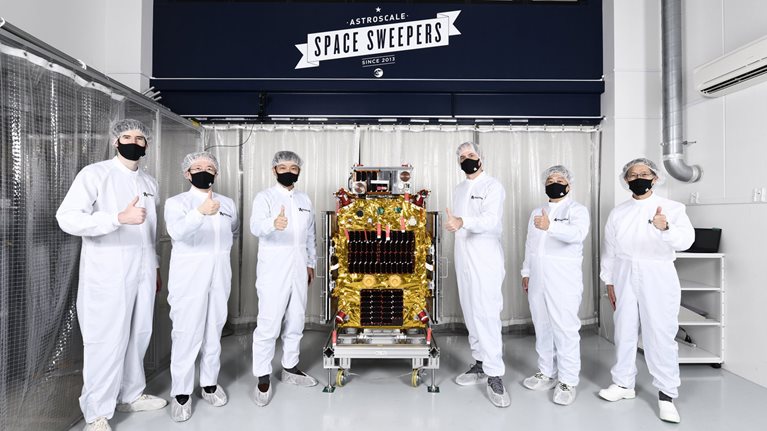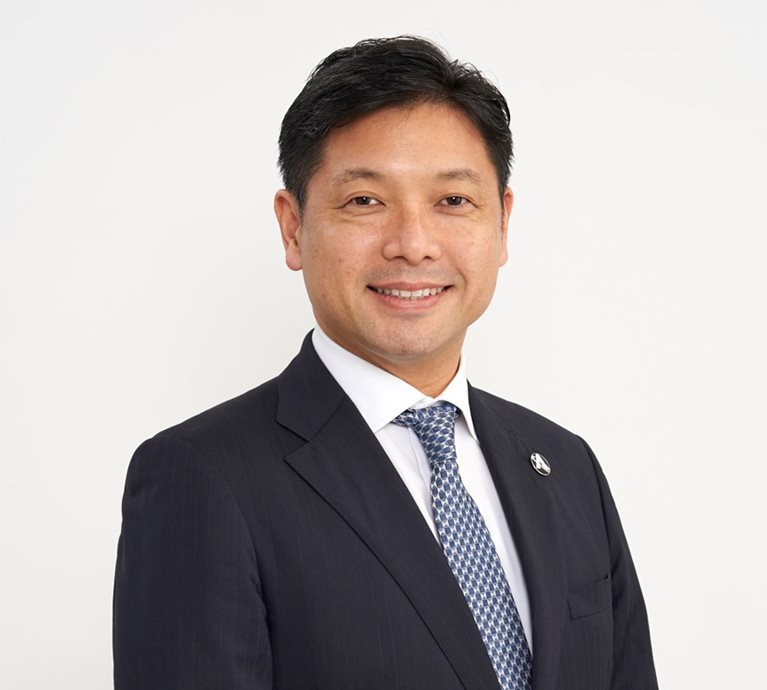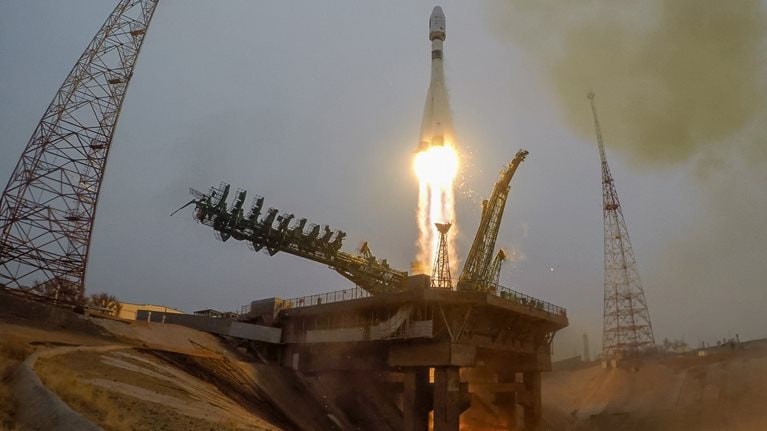
Space: the final frontier. The thought evokes distance, but today’s reality is that our connection to space has never been closer. Nobu Okada (TOK 01-04) recognizes the relationship between earth and space better than most. When we first talked to Nobu in 2016, his company Astroscale – the company pioneering the sustainable use of space through space debris removal and on-orbit servicing solutions – was just three years old.
Nobu’s endeavor has coincided with a period of industry growth and increased accessibility, activity, and dependency on space. However, our orbit is getting crowded – there are more than 8,000 metric tons of debris threatening satellites. “It’s impossible to decouple earth and space, says Nobu. “Our daily lives rely a lot on space technologies. Traffic management, communications, agriculture, navigation – all of these things depend on satellite services. To have a sustainable development on earth, we have to secure the sustainable use of space.
Here, we catch up with Nobu to talk about the world’s first space debris removal satellite, the power of the private sector, increasing awareness of space sustainability, and what the outlook for our orbit is today.
To listen to Nobu, scroll to the bottom of the page for a few sound bites from our interview.
How has the space debris situation evolved?
Compared to 2013, when I founded Astroscale, the number of objects in orbit, like spent rocket upper stage bodies and satellites, that have exploded or broken up have accelerated. For example, in March alone, we saw two large defunct satellites in already congested orbits break up and create more pieces of debris. In addition, the number of satellites being launched is at record highs because of large constellations satellite operators, so we are adding more objects into already congested orbits where the number of breakups is increasing. We don't have a lot of time to wait as the situation is only becoming worse.
At Astroscale, we are working on three challenging aspects of securing space sustainability. We are developing innovative technologies, advancing the business case, and working with government and commercial stakeholders. There are numerous discussions going on among leaders across various groups, global media is covering the issue more, and the United Nations is continuing to take significant steps to prevent and minimize the creation of space debris. So significant progress is being made, but there is still much more to do.
How can sustainability be ensured as space activity increases?
Much like our roads and highways here on Earth, we need traffic management systems in space to prevent a catastrophic cascading effect. Earth’s orbits for satellites are like highways for cars. When we saw an increase in the number of cars on the highways, we didn’t tell drivers to stop driving. Instead, we introduced road services, like tow trucks, so when a car broke down, the service could tow the car to ensure the smooth flow of traffic on the highway. There is traffic management for cars, maritime travel, and aviation, but there's no space traffic management yet. We need such services in space.
Astroscale just marked a major milestone. Tell us about that.
We just celebrated the successful launch of the world’s first commercial debris removal mission in March. When I started this company, nobody had a solution for removing space debris, so we developed the technologies necessary for debris removal into one spacecraft called ELSA-d, which stands for “End-of-Life Services by Astroscale-demonstration.
To explain how the satellite works, we first have to identify and approach the object in orbit, which is traveling around eight kilometers per second, or about ten times faster than a bullet. Once we successfully approach the piece of debris, our satellite will synchronize its movement so that it looks like a sort of dance with the tumbling object to offset the relative rotation rate to zero. We will then capture, stabilize, and bring down the debris to the earth's atmosphere, where it will burn up on re-entry.
It was extremely challenging because we had to review, revise, and design the spacecraft so many times. But in the end, we made it, and I am so proud of the team.
How have your goals and challenges evolved over the last decade?

The space debris issue is complex because we have to solve the technology, business model, and regulations simultaneously. The challenges we faced at the beginning were to build a great team, raise funds, and develop the technologies. We’ve now grown to 180 employees across five countries, raised USD $200 million in funding, and successfully launched ELSA-d.
Our challenge today is different. We expect to see an increase in demand from the industry, so we have to grow our team and develop our technologies for mass production to deliver these solutions around the world. My goal is to make space debris removal routine work by 2030.
What new technologies and services are you working on?
We are developing multiple services right now while simultaneously developing mass production capabilities. We are preparing to start the technical demonstrations for ELSA-d in the coming months. Also, we are developing a service called Active Debris Removal which will remove environmentally critical objects in orbit such as spent upper stage rocket bodies which can measure up to ten meters wide and weigh up to ten tons.
We are also developing an In-situ Space Situational Awareness service, which will be based on a lot of the core technologies from ELSA-d to help satellite operators identify the cause of satellite malfunctions. We also have a Life Extension service where our servicing spacecraft can provide extra fuel to satellites in geostationary orbit. Within the next few years, all of these services will be up and running.
Describe the role of the private sector in this space, and what’s driving it.

The private sector is growing rapidly in the space industry, not just in the space debris removal and on-orbit servicing sector. It’s natural that the private sector has begun playing a key role; they can provide cheaper solutions, develop unprecedented technologies and services, and they have the freedom to optimize a global supply chain and sell their services around the world.
Investors are also increasingly interested in the space industry. They can see that space is the next investment frontier. This trend is growing, and I'm sure the private sector will play an even bigger role in the future of space going forward.
Are you taking on any other roles that complement your larger aspirations for space?
I'm taking on more responsibilities to tackle other complex global issues in the industry. For example, the industry is still very male-dominated, and there are geographical and generational gaps. So, on top of managing Astroscale, I've taken on other roles, including serving as Vice President of the International Astronautical Federation, the world’s leading space advocacy body, to build a better global space community. We have to make sure that developing countries and younger generations are connected to the wider space community and have the opportunity to advance.
How did your time at the Firm impact you?
McKinsey raised my professional standard to a higher level. I learned how to structure discussions, make data compelling, and work with a global team. I also learned how to speak multiple languages – and I do not mean linguistically, but technical language to communicate effectively with engineers, government language to have meaningful discussions with officials, financial language to talk with investors, and finally the clients’ language to create strong relationships.
The principles that I learned from my time at McKinsey were the most valuable. These principles made me more resilient and solution-oriented and were ingrained in me to adhere to the highest professional standard.